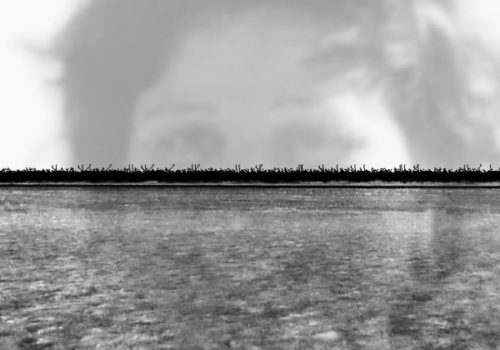Born in 1976, photographer and video-maker Nicène Kossentini lives and works in Tunis. A graduate of the Institute of Fine Arts in Tunis and Marc Bloch University in Strasbourg, she has also studied at the Le Fresnoy National Studio for the Contemporary Arts in Tourcoing, France, and the École de l’Image in Paris. She has exhibited in Tunisia, South Africa, Mali, Switzerland and Norway.
The series is named after a salt lake a few kilometres from her home city of Sfax. Each image of the dried-out lake is combined with the portrait of a woman taken from the family album, representing the artist’s mother, grandmothers and great-grandmothers. She conjures up the ‘inhabited places’, those secret gardens we all have inside us. This metaphorical view of space – a fictional or experienced mental space – calls on the viewer to immerse himself in a floating world mingling presence and absence, oblivion and revival.
Finding expression in images repeating the same motif – the lake – over a period embracing three generations, this urge to introspection also testifies to the photographer’s fascination with two famous composers of repetitive music, Terry Riley and Philip Glass. In the course of her sequential explorations Kossentini reveals an obsession with bringing together the fragments of her own story, bringing her memory-flow back to the surface. This flow is visually extended by a written sentence with no beginning or end, no punctuation and no meaning, that uninterruptedly accompanies the images. Indecipherable and incomprehensible, the sentence evokes lost links with the past, buried strata and hidden or repressed truths.
At once artistic and civic, this duty to memory she shares with many Arab artists is to be seen, says sociologist Jocelyne Dakhlia, in relation to the hegemony of the states of the Maghreb, with their insensitivity to heritage and abdication in terms of museum policy. In the context of the Arab Spring these artists, who until now had their gaze fixed on the past, may henceforth favour a present which is taking its place in history.
Mouna Mekouar, curator
Text from the catalogue-book “Photoquai”, co-edited by Musée du Quai Branly- Actes-Sud
















